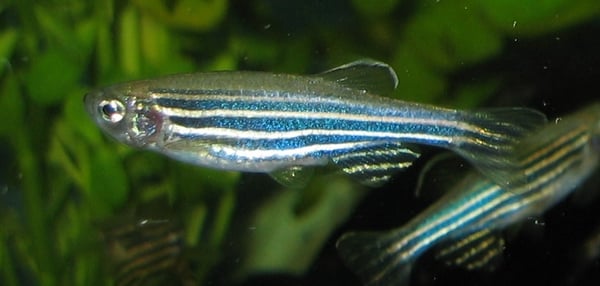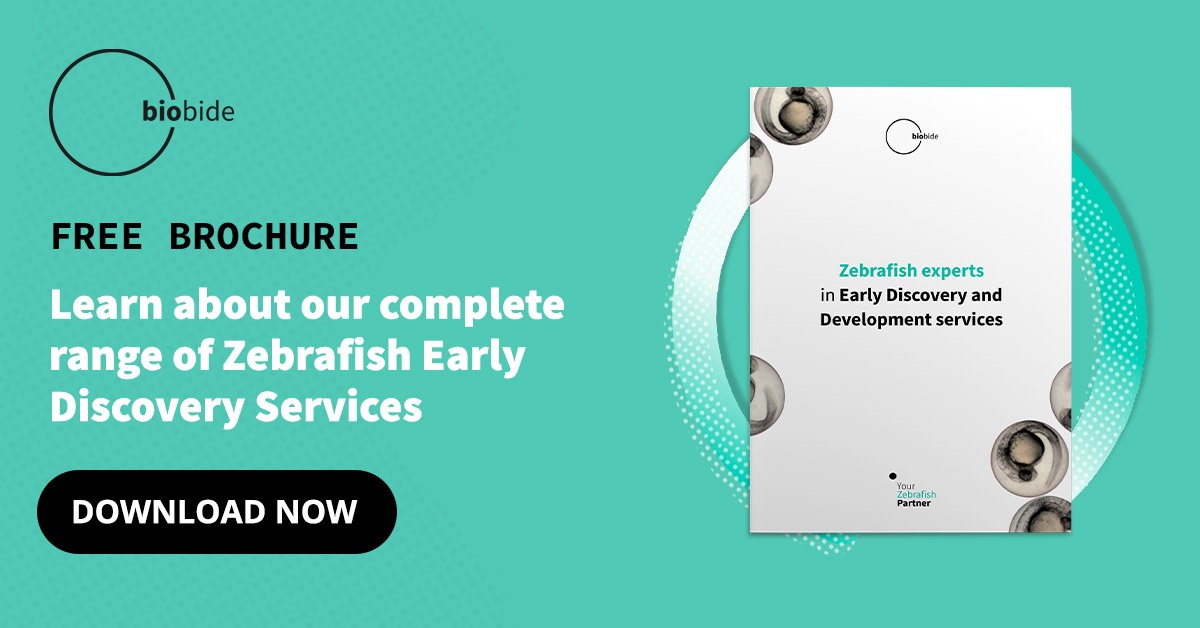As an alternative to rodents and other animals, fish are now becoming a popular model for medical research, especially for pre-clinical research. Mice and rats have long been the primary choice for medical research experiments, but in some cases, fish are quickly replacing them, especially zebrafish.
This tiny stripy Asian fish is often found in decorative aquariums, but it also has a major role as an experimental model.
Why are fish complementing, or even replacing, rodents in research?
Zebrafish have become one of the main alternative testing models over rodents as they are small and cost-effective. The other benefits of using zebrafish in research are:
- Their very similar anatomy to the human genome, like brain, eyes, heart, and liver, makes them suitable for studying human diseases.
- Diurnal vertebrates, contrary to rodents.
- Fully develops on average 48 hours after fertilization.
- External fertilization and transparency makes them easier to work on with direct visualization.
- Cost-effective husbandry – due to its small size.
- Regeneration of organs – such as eyes, tail, heart, and cells regrow if one is lost.
The speed at which the zebrafish develops compared to a mouse, for example, is incredible. A mouse carries its developing embryos in the womb for an average of 3 weeks before it gives birth. Zebrafish, in comparison, lay up to 300 eggs each week. These embryos develop rapidly and are live specimens within 4-5 days after fertilization, with most of the organs developed and functioning.
The medical industry only approves a limited number of drugs each year due to the highly preventive development costs and failure at the early stages. This failure can be due to safety issues, funding running out, lack of efficacy, or problems with study groups. A result of this is that the costs have to be written off by the pharmaceutical companies, so an effective solution is essential.
Therefore, the cost savings in using zebrafish over other models is a clear benefit with medical research costs being so high. It can take more than 10 years or more from initial development to the launch of a drug and it can cost millions.
Zebrafish and the 3 Rs
In addition to cost benefits, using zebrafish in medical research complies with the 3Rs policy. This states that testing on animals takes account of:
- Replacement – an alternative is used where possible.
- Reduction – fewer animals undergo testing.
- Refinement – the animals are treated humanely, minimizing their suffering.
This policy is a legal requirement in the European Union but is also adopted by many other external countries.
What diseases are zebrafish used to study?
As they are so similar to humans in terms of genetics, zebrafish can be used in a wide variety of disease research. They have been used in studies for many human diseases, including:
- Cancer
- Neurodegenerative diseases: Parkinson’s Disease, Alzheimer Disease…
- Muscular diseases: muscular dystrophy, Duchenne's Syndrome…
- Metabolic diseases: Types 1 and 2 diabetes, Non-alcoholic fatty liver disease, Thyroid problems
- Cardiovascular diseases and Eye diseases
Research methods are constantly developing and innovating, allowing zebrafish to be used for other both common and rare diseases.
How are zebrafish used to explore human diseases?
When a disease occurs in the human body, cells mutate and attack the healthy cells. One way experiments are carried out on zebrafish is to kill the offending cell to see how the organ or body reacts. This may present symptoms that scientists had not expected and show any abnormalities that appear in the cells.
This procedure also allows scientists to see when exactly the cell mutates and if there is a pattern. It can demonstrate when it is normal for symptoms to appear, which is key in understanding the time between a disease beginning and the person affected being aware of the symptoms.
As well as this method of prediction of disease, researchers can also use zebrafish to screen drugs and see how the body will react to those treatments, selecting the most efficient one but the safest too.
It is possible to extract certain genes from the fish or even insert genes to study how the zebrafish's anatomy reacts. Being transparent means scientists can view reactions easily in real-time and on a live model.
There are many alternative models to animals that can be used to test on and identify human diseases, but the zebrafish is fast becoming one of the most popular due to its similarity to human make-up and its cost benefits.
Other aquatic models
Ecotoxicity and environmental toxicity areas are also very keen on the use of aquatic models, including different types of fish. Those guidelines recommend the use of fish for checking how chemicals and drugs will affect the wild animals in the environment, including seas and rivers. Therefore, they recommend testing the toxicity of different fish that can be found in nature, such as zebrafish but also medaka, trout, and fathead minnow. But among those recommended fish, the most cost-effective, easy to handle, and frequently used remains zebrafish. Apart from these fish, the OECD aquatic toxicity guidelines include other aquatic models to complement the fish assays, such as algae or daphnia. Those guidelines set the bases for a more sustainable drug and chemical industry.
Sources
- https://www.sciencedaily.com/releases/2016/07/160719161816.htm
- https://www.nature.com/articles/s12276-021-00571-5
- https://www.hopkinsmedicine.org/research/advancements-in-research/fundamentals/in-depth/zebrafish-help-unlock-clues-to-human-disease






